The normal way to find out the Chinese Solar or Hsia Calendar equivalent of any western date is to refer to the Ten Thousand Year Calendar Book. Another way it is to use my online Ten Thousand Year Calendar.
But what if you need to do a Ba Zi consultation and are caught off-line and without a 10000 year reference in your hands? What if you life depended on it? Can you save yourself?
In this article and the next, you will learn how!
Let’s start with the heavenly stem and earthly branch of the year. Assign a number from 1 to 10 to each of the heavenly stems as shown in the table below.
| Stems | Jia | Yi | Bing | Ding | Wu | Ji | Geng | Xin | Ren | Gui |
| Number | 1 | 2 | 3 | 4 | 5 | 6 | 7 | 8 | 9 | 0 |
Next, take the last two digits of the year minus 3. For example for 1993, you take 93 - 3 = 90. Take the last digit which is 0. From the table above 0 is Gui which is the heavenly stem for the year 1993.
Let's try another example. Let's take 2006. The last two digit is 06 or 6. Take away 3 and you have a remainder of 3 which is Bing. For any year where the last two digit is less than 3, e.g. 2001, you take a last two digit and add 10 to it.
(Please note that the Chinese solar year starts on or around the 4th February, any date prior to this date belongs to the previous year)
To calculate the earthly branch, you need to brush up on your division. First assign the numbers 1 - 12 to the earthly branches as shown in the table below:-
| Branch | Zi | Chou | Yin | Mao | Chen | Si | Wu | Wei | Shen | You | Xu | Hai |
| Number | 1 | 2 | 3 | 4 | 5 | 6 | 7 | 8 | 9 | 10 | 11 | 12 |
Next, take the last two digit of the year. If it is 12 or less, then read the branch of the table above. If it is 13 or higher, then divide it by 12 and take the remainder. For the year 1993, the last two digits are 93. Divide 93 by 12 and get a 7 plus remainder of 9. Add 1 to the remainder which gives 10. If you refer to the table above, 10 is the earthly branch of You.
Therefore the stem branch equivalent for 1993 is Gui You.
For years greater that 1999, you add 100 to the last two digit of the year. For example for 2006, you add 100 to the last two digits 06 to give 106. Divide 106 by 12 and you get 8 plus a remainder of 10. Add 1 to 10 gives you 11 with is the earthly branch of Xu. And true enough 2006 is the year of Xu or the Dog!
With the year out of the way, let us focus on finding the stem and branch of the month.
In the Hsia Calendar system the earthly branch of the first month is always Yin and it starts on either the 4th of 5th of February. This is followed by Mao in the second month which usually starts on either the 6th or 7th March. Next come Chen, then Si and so on until Chou. For the starting dates of the rest of the months please refer to this Chinese Solar Calendar article.
Unlike the months, the first heavenly stem of every year is not fixed. The objective is to determine the heavenly stem of the first month for any particular year. If you can do that, you can easily figure out the stem branch combination for any other months. For example if the first month is Ren Yin, the next month will be Gui Mao, followed by Jia Chen and so on which are the next stems and branches in the normal sequence of the Heavenly Stems and Earthly Branches.
Here is what you need to do to determine the stem of the first month. Write down the stems in the format below over three lines. The first and second line is the normal sequence of the stems running for left to right. The third line is also the normal sequence with the exception that it consists only of the yang stems (Jia, Bing, Ding ..) and it starts with Bing instead of Jia.
| First Line | Jia | Yi | Bing | Ding | Wu |
| Second Line | Ji | Geng | Xin | Ren | Gui |
| Third Line | Bing | Wu | Geng | Ren | Jia |
Let’s say that you want to find out the stem of the first month of the year Ding You. If you refer to the first two lines of the table above, you will see that Ding is in the fourth column. Now refer to the stem on the third line directly below Ding. What do you see? Ren, right? Therefore the stem-branch combination of the first month in Ding You year is Ren Yin.
Let's take another example. Take the year Gui You. Gui is the last column on the second line. Immediate below Gui on the third line is Jia. Therefore the stem-branch combination of the first month in Gui You year is Jia Yin.
Suppose that the person is born on the 24th April in 1993, a Gui You year. February is the 1st month, March is the 2nd followed by April which is the third month. If February is Jia Yin, then March is Yi Mao and April which is the third month is Bing Chen. The table below should give you a clearer picture.
| Month | Feb | Mar | Apr | May | Jun | Jul | Aug | Sep | Oct | Nov | Dec | Jan |
| Stem | Jia | Yi | Bing | Ding | Wu | Ji | Geng | Xin | Ren | Gui | Jia | Yi |
| Branch | Yin | Mao | Chen | Si | Wu | Wei | Shen | You | Xu | Hai | Zi | Chou |
We will learn a method to do the same for the day and hour pillar. There are at least a few mathematic formulas to calculate the heavenly stem and earthly branch for the day but here is the one that I feel is the easiest to learn and use.
The first step is to derive the ‘Number’ using the following formula.
Number = 5 (x-1) + (x-1)/4 + 15 + y
Where x is the last two digit of the year and y is the number of days from the 1st of Jan to the day in question.
Example: 15th June 1957.
x = 57 (last two digit of the year 1957)
(For the new millennium you must add 100 to the last two digits.
Example: 12th March 2004.
x = 104 (last two digit of 2004 plus 100)
To calculate the value for ‘y’ we need to know if the year is a leap year or not. This is very straightforward. Any Shen (Monkey), Zi (Rat) and Chen (Dragon) year is a leap year and has 29 days in the month of February! The rest have 28 days in February.
Example: 15th June1957
1957 is a You (Rooster) year. It is not a leap year and February has 28 days.
Example: 12th March 2004
2004 is a Shen (Monkey) year. It is a leap year and February has 29 days.
From Calendar101 we know that Jan, Mar, May, July, Aug, Oct and Dec has 31 days while the other remaining months except Feb has 30 days.
Therefore to calculate the number of days from the 1st of Jan to the date in question we simply add them up.
Example: 15th June 1957
Y = No of days in Jan + No of days in Feb + …… + 15 days in June
Y = 31 (Jan) +28 (Feb) +31 (Mar) +30 (Apr) +31 (May) +15 (Jun)
Y = 166
(Note: Since 1957 is not a leap year, February has 28 days)
Example: 12th March 2004
Y = No of days in Jan + No of days in Feb + 12 days in March
Y = 31 (Jan) +29 (Feb) +12 (Mar)
Y = 72
(Note: Since 2004 is a leap year, February has 29 days)
Let’s calculate the ‘Number’ for both the examples.
Example: 15th June 1957
Num = 5(x-1) + (x-1)/4 + 15 + y
Num = 5(57-1) + (57-1)/4 + 15 + 166
Num = 5(56) + 56/4 + 15 + 166
Num = 280 + 14 + 15 + 166
Num = 475
Example: 12th March 2004
Num = 5(x-1) + (x-1)/4 + 15 + y
Num = 5(104-1) + (104-1)/4 + 15 + 72
Num = 5(103) + 103/4 + 15 + 72
Num = 515 + 25.75 + 15 + 72
Num = 627.75
Num = 627 (take the absolute value)
To derive the Heavenly Stem of the day, we calculate the remainder of the ‘Number’/10.
| Remainder | Heavenly Stem |
| 1 | Jia 甲 |
| 2 | Yi 乙 |
| 3 | Bing 丙 |
| 4 | Ding 丁 |
| 5 | Wu 戊 |
| 6 | Ji 己 |
| 7 | Geng 庚 |
| 8 | Xin 辛 |
| 9 | Ren 壬 |
| 10 | Gui 癸 |
In the example of the 15th June 1957, the ‘Number is 475. When we divide this number by 10 we get 47 and a remainder of 5. From the table 5 is ‘wu’ 戊which is the Heavenly Stem of the day (Also known as Day Master in Ba Zi)
In the example of the 12th March 2004, the ‘Number’ is 627. When we divide this number by 10 we get 62 and a remainder of 7. From the table 7 is ‘geng’庚 which is the Heavenly Stems of the day.
To derive the earthly branch of the day, calculate the remainder of the Num/12 and compare against the table below.
| Remainder | Earthly Branch |
| 1 | Zi 子 |
| 2 | Chou 丑 |
| 3 | Yin 寅 |
| 4 | Mao 卯 |
| 5 | Chen 辰 |
| 6 | Si 巳 |
| 7 | Wu 午 |
| 8 | Wei 未 |
| 9 | Shen 申 |
| 10 | You 酉 |
| 11 | Xu 戌 |
| 12 | Hai 亥 |
In the example of the 15th June 1957, the remainder of 475/12 is 7 which is equivalent to the earthly branch ‘wu 午’. Thus the stem and branch combination of the 15th June 1957 is Wu Wu (戊午).
In the example of the 12th March 2004, the remainder of 627/12 is 3 which is equivalent to the earthly branch of ‘Yin 寅’. Thus the stem and branch combination of the 12th March 2004 is Geng Yin (庚寅)
Calculating the stem and branch of the hour pillar is much simpler.
From BaZi 101 we know that Zi hour is between 11 to 1 am, Chou is between 1 am to 3 am and so on. Please refer to the table below for the rest of the hours.
| Hours | Earthly Branch |
| 11 pm to 1 am | Zi 子 |
| 1 am to 3 am | Chou 丑 |
| 3 am to 5 am | Yin 寅 |
| 5 am to 7 am | Mao 卯 |
| 7 am to 9 am | Chen 辰 |
| 9 am to 11 am | Si 巳 |
| 11 am to 1 pm | Wu 午 |
| 1 pm to 3 pm | Wei 未 |
| 3 pm to 5 pm | Shen 申 |
| 5 pm to 7 pm | You 酉 |
| 7 pm to 9 pm | Xu 戌 |
| 9 pm to 11 pm | Hai 亥 |
If you are born at 10 am, it is Si hour, if you are born at 9.15 pm it is Hai hour and so on.
This is the easy part. What about the heavenly stem of the hour? For this we need to look at the day master. Let’s take the example from above of someone born on the 15th Jun 1957 at 4.30 am.
We know that the stem of the day (or day master) is ‘wu’ and we know from the above table that 4.30 am noon is ‘yin’ hour.
If we know the heavenly stem at Zi hour, we can derive the stem at any other hour by just moving forward in the heavenly stems sequence. For example if the stem at Zi hour is Jia, then the stem at Chou is Yi (a step forward), the stem Yin is Bing (another step forward in the sequence of the heavenly stems) and so on.
To derive the stem at the first (Zi) hour all you need to do it remember the table below.
| Stem of the Day | Jia | Yi | Bing | Ding | Wu |
| (Or Day Master) | Ji | Geng | Xin | Ren | Gui |
| Stem of ‘Zi’ Hour | Jia | Bing | Wu | Geng | Ren |
(Note: You may observe that the stem of the first or ‘Zi’ hour is always an ‘odd number’ or ‘yang’ stem.)
Let’s get back to the example of the 15th Jun 1957 (Day Master ‘wu’) at 4.30 am.
From the table above, we see that the stem of the first or ‘Zi’ hour is Ren. For the next hour which is Chou the stem is simply ‘Gui’ (the next stem in the sequence of heavenly stem). Chou is followed by ‘Yin’ and the next stem in the sequence is ‘Jia’. Hence the stem branch combination of Yin hour on the 15th June 1957 is ‘Jia Yin’.
Let’s take another example, 12th Mar 2004, this time at ‘Wei’ hour.
We know from the calculation above that this is a ‘Geng’ day. From the table above, the stem of the first hour is ‘Bing’. The stem branch combination is ‘Bing Zi’. The second hour is thus Ding Chou, the next hour is Wu Yin, followed by Ji Mao, Geng Chen, Xin Si, Ren Wu and finally arriving at Gui Wei.
The above method is normally used in conjunction with the finger counting method. All you need to know is the stem of the ‘Zi’ hour and you simply run the sequence of the heavenly stems until you reach the desired hour!
http://www.absolutelyfengshui.com/library/solar-day-hour.php

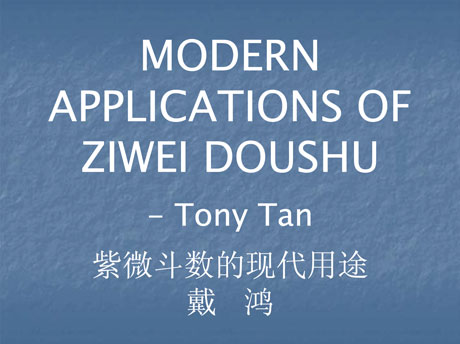
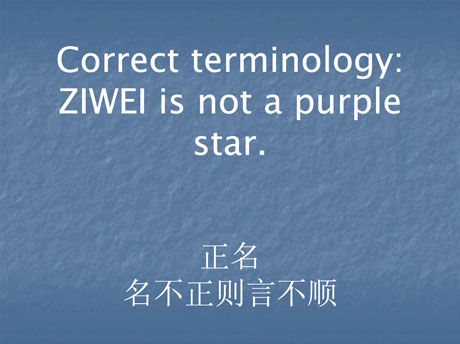
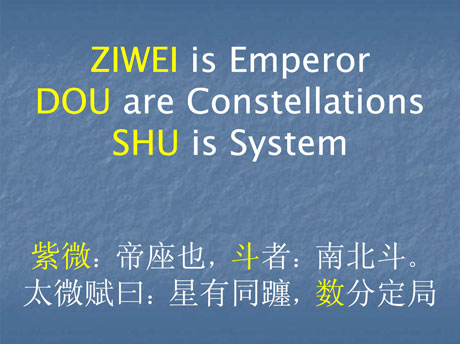
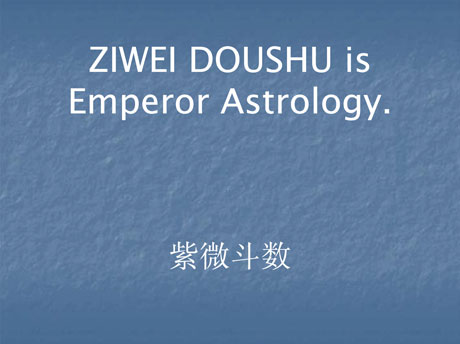
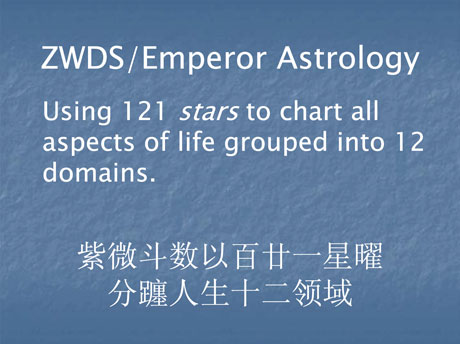
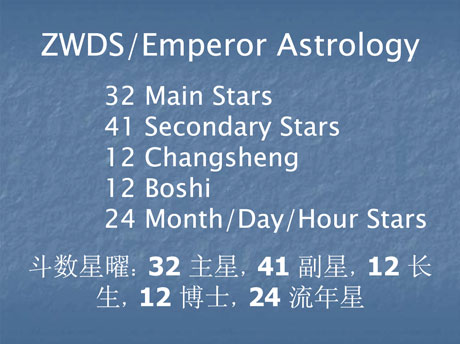
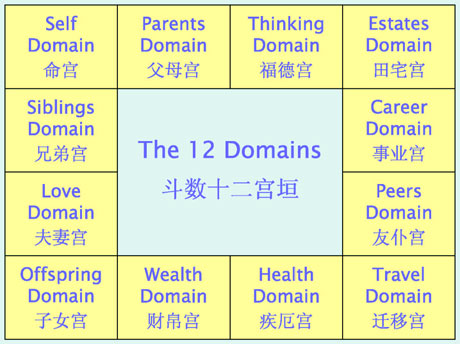
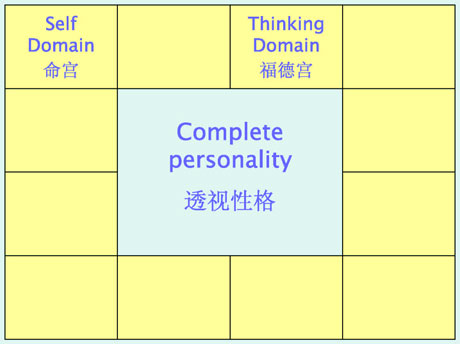
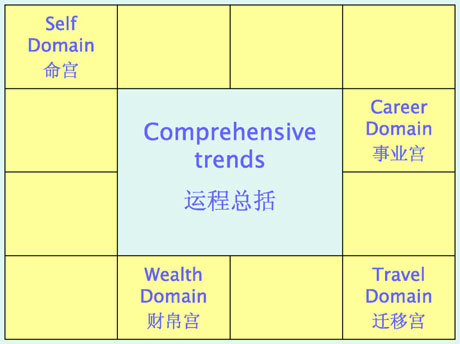
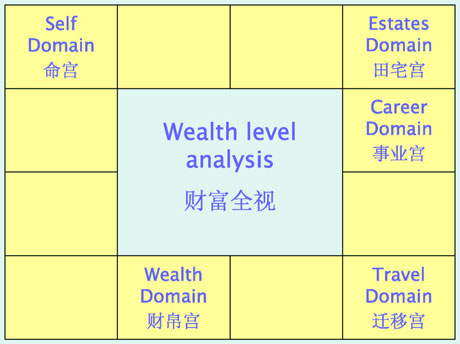
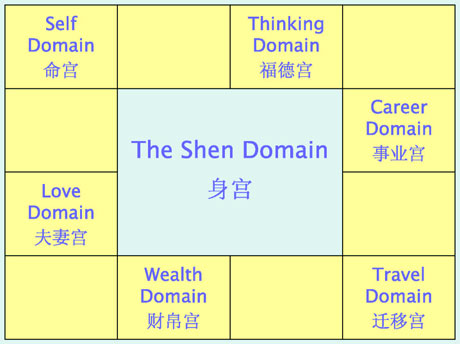
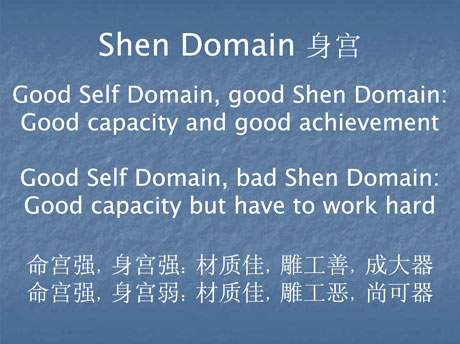
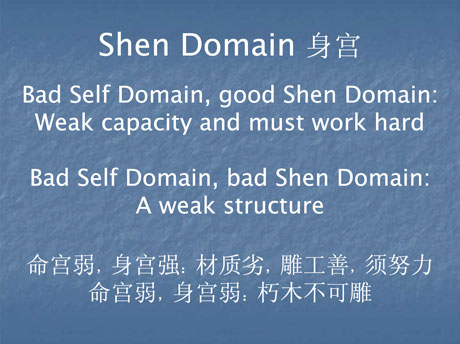
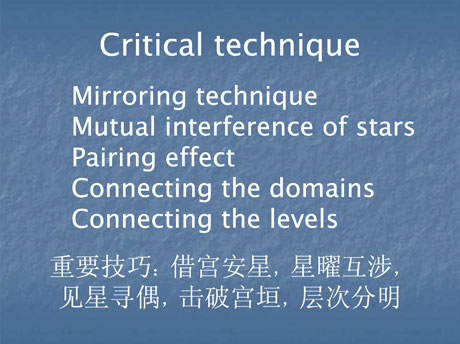
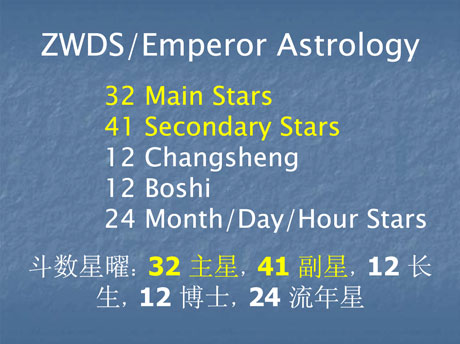
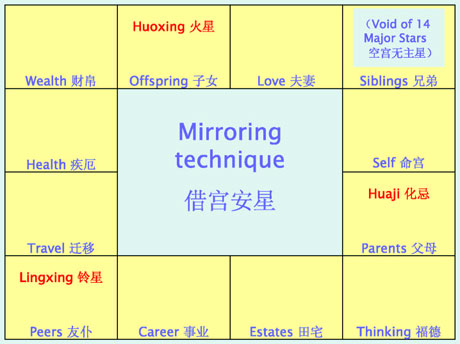
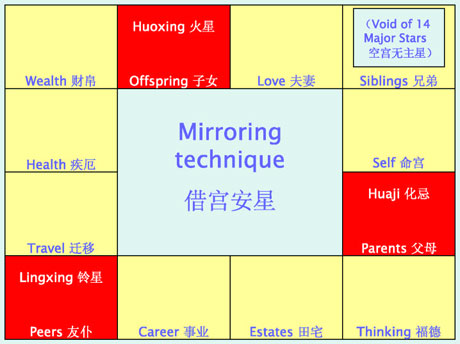
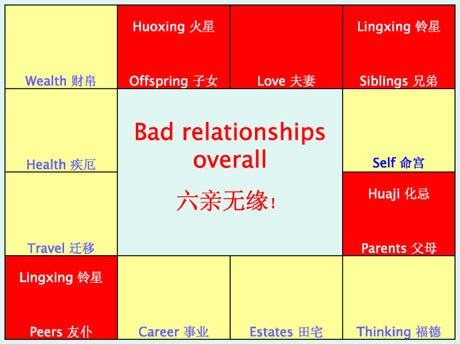
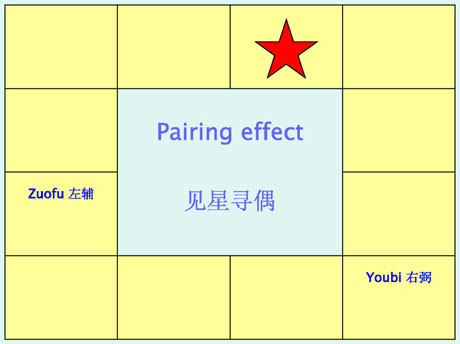
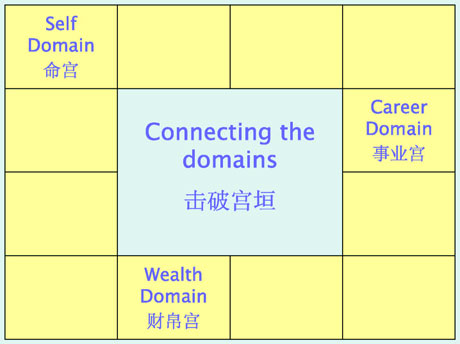


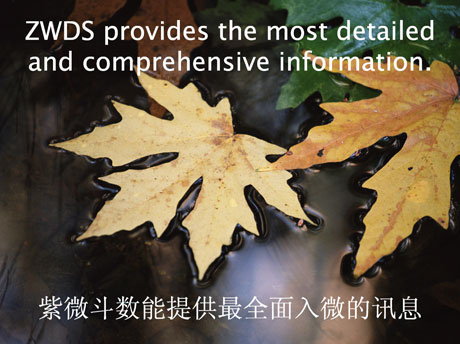

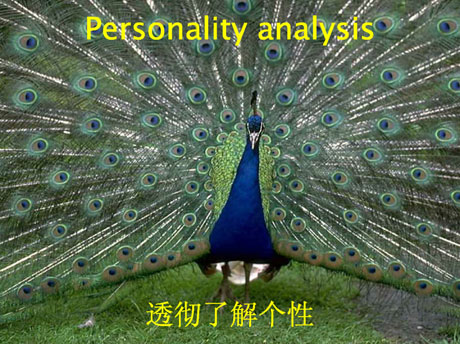



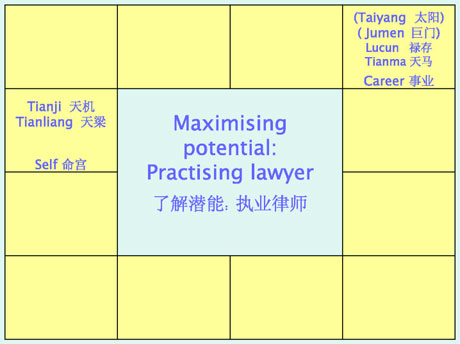
















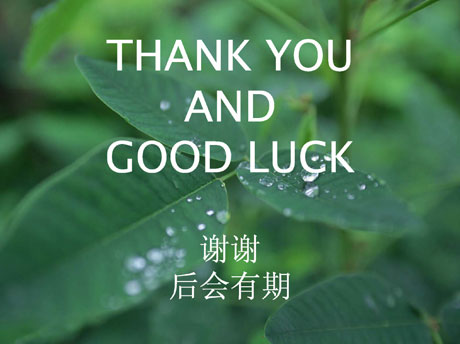
 Many practitioners believe that the Ganzhi system is model of this astronomical system and its influences. The outstanding feature of this system is it simplicity and that it can be understood and applied by almost anyone.
Many practitioners believe that the Ganzhi system is model of this astronomical system and its influences. The outstanding feature of this system is it simplicity and that it can be understood and applied by almost anyone.